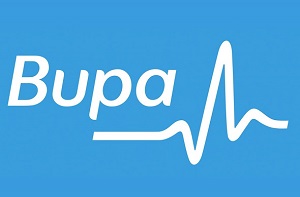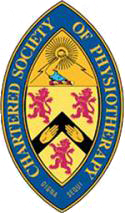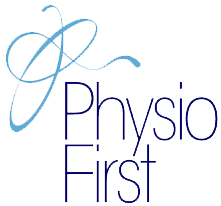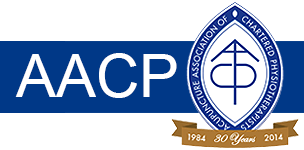What we treat
Dizziness
Dizziness can be variable in its sensation and experience, ranging from feeling lightheaded and off-balance to feeling faint or nauseous with movement or experiencing vertigo. As such it can impact significantly to function, increase the risk of falls and impair quality of life. Balance disorders and dizziness are an increasing public health concern. There are many common causes of dizziness and therefore it is important to seek medical advice from your GP if your symptoms are persistent, associated with sudden movement, changes to vision, changes to hearing or numbness in your face, arms, or legs, in order to rule out conditions out of the scope of physiotherapy. However, physiotherapy can assist with management of dizziness in association with BPPV (Benign paroxysmal positional vertigo), cervicogenic dizziness as a result of restricted range and muscle tension around the neck and can also provide rehabilitation strategies to aid restoration of normal movement as a result of dizziness impairing balance and mobility. This can also be beneficial for patients with disorders of the central nervous system such as Multiple Sclerosis and stroke. Your physiotherapist will undertake a detailed assessment and examination of your neck, reflexes and special tests to assess the inner ear and vertebral basilar artery and recommend the most appropriate treatment programme. In some circumstances dizziness may initially be exacerbated temporarily post treatment and therefore it is recommended that you arrange assistance with transport back home.
TMJ/Jaw pain
The temporomandibular joint is the connection between the temporal region of the skull to the lower jawbone (mandible) and is commonly referred to as the TMJ. Symptoms include pain around the jaw, ear and temporal bone. Swelling, clicking, a locking sensation, headaches and difficulty chewing. There are several causes including trauma, such as whiplash or a blow to the head/face, stress which may induce teeth clenching, an uneven bite, teeth grinding and osteoarthritis. Your physiotherapist can help advise you on how to reduce symptoms, such as using ice, mouth guards at night and a change to softer foods to reduce chewing. Application of ultrasound, massage and soft tissue release alongside exercise will also aid in management and recovery. In addition, your physiotherapist may assess your neck to ensure you have full and equal movement and good posture, as cervical spine dysfunction may exacerbate symptoms experienced at the TMJ.
Neck pain

Neck pain is very common with a variety of underlying causes, which in the most cases is rarely a serious problem. However, if you develop neck pain in association with arm pain and numbness or loss of strength in the arms or hands, then it is important you seek medical advice to rule out any serious pathology.
Most causes relate to overuse or strain of the muscles around the neck as a result of poor posture (work/anatomical), an awkward sleeping posture, stress, wear and tear (spondylosis, spondylitis, osteoarthritis) or injury, such as whiplash.
Symptoms include pain around the neck, shoulders and can radiate into the head which may induce headaches, migraines, or feelings of dizziness. Your physiotherapist will undertake a detailed assessment and examination to identify the underlying cause and provide an appropriate individualised treatment plan to aid recovery and management of your symptoms.
Whiplash
Whiplash is an injury caused by forceful and sudden movement of the head forward or backwards, causing torsional forces through the joints and surrounding soft tissues, leading to inflammation, injury and protective muscle spasm. It often occurs during motor vehicle collisions, but can also result from falls, sports injuries, or a blow to the head/face. Onset of symptoms can be delayed and pain may not be experienced at the immediate time of the whiplash injury, occurring 24-48 hours later. Common symptoms include neck pain and stiffness, which can be exacerbated by movement, reduced range of movement in the neck, headaches, dizziness and/or pain referral into shoulders or the upper back. Overall symptoms can impact on sleep quality and day to day function. Your physiotherapist will conduct a detailed assessment and examination to establish the cause of your symptoms and identify any possible nerve involvement. An individualised management plan will then be formed to reduce inflammation and muscle spasm and restore normal movement. In most cases there is no serious underlying pathology including fractures, however it is important that you seek medical advice if you have sustained a neck injury after a motor vehicle collision or severe fall, especially if your symptoms are in association with severe pain, changes to vision, nausea or vomiting.
Shoulder pain
The shoulder joint is a complex structure comprising of 4 joints and surrounded by numerous muscle and ligamentous structures which allows for movement in a large range whilst maintaining stability. Due to the natural shape of the joint and its complex arrangement, the shoulder is prone to injury and several other conditions, which can lead to loss of the normal movement rhythm, high levels of pain, sleep disturbance and loss of function. The most common conditions include frozen shoulder (adhesive capsulitis), tendinopathies, impingement syndromes, joint instability, or muscle strains or tears, which may involve the rotator cuff. If you have undergone surgical repair, stabilisation, or fracture management of your shoulder, including sling/brace immobilisation, you may also require post-operative physiotherapy care to help you restore and regain normal movement and function.
Your Physiotherapist will conduct a detailed assessment and examination, including several special tests, to identify the underlying cause of your symptoms and formulate an individualised rehabilitation programme to aid you in managing your symptoms, strengthening your muscles and rotator cuff, promoting recovery of your injury and facilitating your return to normal function and sport.
Mid back or thoracic pain
The thoracic spine is located between the base of your neck and lower back, consisting of 12 vertebrae, which therefore makes it the longest portion of your spine. It is the most stable region of your spine due to its connections with the rib cage, which acts to provide vital organ protection and additional rigidity.
The thoracic spine can give rise to pain and movement dysfunction because of muscle spasm/strains secondary to overuse, poor or sustained postures (postural dysfunction), inflammatory or degenerative conditions of the spine or even a secondary effect of shoulder dysfunction/injury. More rarely pain can be a result of fractures in those with significant osteoporosis or following trauma.
It is important that you seek urgent medical review if you have severe pain in your thoracic area following a fall or trauma (major or minor) pain in the central or left part of your chest wall (with or without radiating pain/pins & needles to the left arm, face or jaw) or pain which is constant, of severe intensity and is not relieved by rest, especially if it radiates in a band like distribution or is associated with weakness or numbness in your lower limbs.
Physiotherapists are expertly trained in the assessment and management of back pain and will undertake a detailed clinical assessment and examination to identify the underlying cause of your pain and symptoms. Exercise has been shown to improve the symptoms associated with back pain and your physiotherapist will therefore formulate a treatment plan which may involve exercise, joint mobilisations, soft tissue and muscle energy techniques, postural advice and taping to aid in restoring normal movement and reducing your symptoms.
Following examination the Physiotherapist will outline an individualised management plan, this may consist of home exercises, manipulations, mobilisation, muscle energy techniques, taping and soft tissue techniques to help restore normal movement, improve posture and reduce pain.
Low back pain
Low back pain is a common condition affecting up to 80% of people at some point within their lifetime and can be experienced at any age, including adolescence.
If you experience problems with your bladder or bowel, have reduced sensation of your genitals, anus or groin, sexual dysfunction and pain / weakness in both legs you should urgently seek medical attention.
There are several causes of back pain and the majority are not sinister in nature with most symptoms resolving quickly with early intervention. Longer term management may be required for a smaller percentage of the population who experience more chronic pain symptoms or recurrence.
Low back pain can occur because of muscle spasm/strains secondary to overuse, poor or sustained postures (postural dysfunction), inflammatory or degenerative conditions of the spine or following pregnancy because of hormone changes, overstretching of the abdominal and pelvic floor muscles and postural changes from carrying your baby. Some people will experience pain referral into the lower limb because of nerve root compression and irritation and if severe it can include a change in sensation and weakness. Pain and weakness may also be experienced post-operatively after spinal surgery for disc prolapse or stabilisation and more rarely pain can be a result of fractures in those with significant osteoporosis or following trauma.
It is therefore important that you seek urgent medical review if you have severe pain in your lower back following a fall or trauma (major or minor) or pain which is constant, of severe intensity and is associated with weakness or numbness in your lower limbs, loss of sensation around your genitals and/or changes to your bladder or bowel function.
Physiotherapists are expertly trained in the assessment and management of back pain and our team of highly experienced therapists will undertake a detailed clinical assessment and examination to identify the underlying cause of your pain and symptoms. Research has shown that exercise is effective at improving symptoms associated with back pain. Your physiotherapist will therefore formulate a treatment plan which may involve exercise, joint mobilisations, soft tissue and muscle energy techniques, postural advice and taping to aid in restoring normal movement, reduce your symptoms, minimise recurrence and help you keep active.
Hip, knee and ankle pain
Lower limb joint pain around the hip, knee and ankle are common and can give rise to pain on movement or weight bearing, swelling, joint instability, clicking, locking or giving way.
Structures causing pain and dysfunction around these joints include ligaments, tendons, muscles and cartilage. Inflammation or tears of these structures can result from overuse, degenerative changes or because of a wide spectrum of injuries following sports or falls. The small fluid filled sacs which sit between the muscles help to reduce friction forces, however these can also become inflamed causing a bursitis and therefore pain both at rest and on movement.
Other injuries can also occur because of biomechanical dysfunction as a result of joint malalignment, a muscle imbalance or the surrounding supportive soft tissues becoming excessively weak or tight. This leads to a change in the shear forces going through a joint and the surrounding structures and can result in pain and loss of normal movement.
There are a range of appropriate treatment options, which can be used to manage symptoms in all these conditions, depending upon the underlying cause. Your physiotherapist will conduct an individualised assessment, undertaking the relevant special tests to identify the cause of your symptoms and formulate a treatment plan with you. If there is concern regarding significant damage to cartilage or ligaments, which requires a specialist consultant orthopaedic review, then your physiotherapist will advise and assist in the referral process, whether you choose to pursue NHS or private treatment. Referrals can be undertaken in conjunction with ongoing physiotherapy treatment if this is deemed appropriate by your treating clinician.
Tennis elbow
Tennis elbow is the common name for a condition known clinically as lateral epicondylitis. It occurs when the tendon which attaches to the lateral epicondyle of the elbow (the bony prominence on the outside of the elbow joint) becomes dysfunctional leading to inflammation (tendonitis) or disorganised scar tissue (tendinosis). This can develop slowly or gradually over time and become chronic if left untreated. Pain is often produced during activities such as gripping, twisting your forearm or lifting objects up and can be associated with repetitive or overloading type activities such as racquet sports, use of a computer mouse, painting or gardening for example. This is because the muscles undertaking extension at the fingers and wrist form the common extensor tendon which attaches to the lateral epicondyle. Physiotherapy treatment including soft tissue mobilisation, electrotherapy, taping, stretches and acupuncture can be very effective in alleviating the symptoms alongside advice on how to adapt or correct your activities to prevent reoccurrence, especially where biomechanical dysfunction is contributing to the tendinopathy. Your physiotherapist will undertake a detailed assessment and guide you accordingly.
Achilles tendinopathy
The Achilles is a tendon which connects the calf muscles to the heel and is the thickest and strongest in our body, being able to resist string tensile forces. However, it’s blood supply is poor, which characterises its slow healing following damage. Achilles tendinopathy is a generalised term for injury to the tendon, which can be caused by microtears in the tendon, a tendonitis, which may occur from a sudden acute force on the tendon causing inflammation, or a tendinosis, which can result in degeneration of the tendon and can occur as a result of overuse, repetitive strain or when there has been delayed or failed healing from a tendonitis. Some factors can contribute to a higher risk of developing Achilles tendinopathy such as biomechanical misalignment, a lack of flexibility or restricted range of movement around the knee and ankle, increasing age or other underlying pathologies such as diabetes.
You may experience sharp pain or a deep aching feeling in your heel, around the tendon or at the base of the muscle, which may increase with more sudden movement or activity. You may also have a feeling of stiffness especially on initial movement, which is often worse first thing in the morning. Swelling can also occur around the tendon and lower calf and some people may develop a thickened area or small lump on the tendon and it can be quite painful to touch. In some circumstances the Achilles may rupture, which may present as a popping or snapping sound followed sudden sharp pain and swelling and difficulty going upstairs or onto tiptoes.
Your physiotherapist will perform an individualised assessment, undertaking special tests and a biomechanical assessment to identify the underlying cause of your tendinopathy and injury. A programme will then be formulated providing appropriate exercises such as eccentric loading, soft tissue and joint mobilisations to increase range of movement and tissue length and other adjuncts such as taping, electrotherapy or advice regarding standard orthotics to help correct joint alignment. Advice will also be provided regarding graded return to activity and sport. If there is concern regarding tendon rupture, then your physiotherapist will refer you on to the appropriate clinician for urgent management.
Plantar fasciitis
The Plantar Fascia is a strong fibrous band connecting the heel to the ball of the foot and toes, providing support to the arches of the foot and shock absorbency during walking and weightbearing activity. Plantar Fasciitis occurs most commonly through overuse type injuries or repetitive strain, which can be a result of sudden increases in training, a change of footwear or poorly supporting footwear. This produces microtrauma and leads to degeneration of the fascia and pain. Other risk factors contributing to development includes abnormal biomechanics of the foot, which may be developmental, or because of muscle shortening or joint range restriction around the foot and ankle. Symptoms are often characterised by acute heel pain especially with initial weight bearing and first contact with the floor in the morning. You may develop a limp and pain can be exacerbated by climbing stairs or walking barefoot.
Your physiotherapist will perform an individualised assessment, undertaking special tests and a biomechanical assessment to identify the underlying cause of the plantar fasciitis. A programme will then be formulated providing appropriate exercises, soft tissue and joint mobilisations to increase range of movement and tissue length and other adjuncts such as taping, electrotherapy or advice regarding standard orthotics to help correct joint alignment and appropriate footwear. Advice will also be provided regarding graded return to activity and sport.










